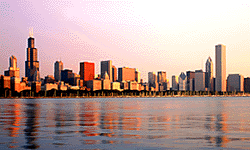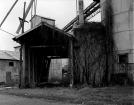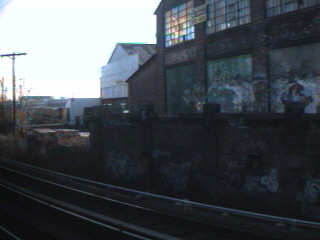
Stuart Dybek's Chicago

Neighborhoods
Dybek's works focus almost exclusively on the Southwest side of Chicago . He writes about what he knows having grown up in this area. He refers to the neighborhood as the official blight area in Chicago the neighborhood name is known as Pilsen and El Barrio. The neighborhoods were considered a "urban ghetto." As in his stories the real life neighborhood was ethnically diverse with working-class Poles, Czechs, and Hispanics.[3]
The major diversity of these neighborhoods created a pull to let one self be identified by their ethnicity. "Chicago, one of the most racially segregated cities in the U.S., ubiquitous distinctions about neighborhoods are virtually inseparable from their overt or submerged racial and also class-inflected meanings, and so have a pronounced importance over identity formation" [21]. Dybek presents similar ideas about identity and identity formation in his short stories.
The characters that Dybek creates give a sense of community to the city. In The Woman Who Fainted, the narrator remembers when he went to church there was a woman who would faint due to the heat. It is her blue-green dress that makes her stand out alone to the narrator [14]. He tells of being in a place of worship, knowing that one should be paying attention to the ceremony- yet- it is the event of the woman which happens every Sunday that is most interesting. She is that woman who everyone in the community knows because of her fainting spells which disrupt the church service. She serves as a memory specific to this neighborhood in Chicago . This sense of community can also be found in the Lights. This vignette gives a sense of community where all the neighbors down the block- whether on their door step, hanging out at the corner store, or just walking down the block- join in unison to give the same warning to the driver passing through the neighborhood that they need to put on their head lights.
Community is also seen in the story Hot Ice. Douglas Park is a site for urban renewal projects by the city, which means many old buildings and businesses are to be torn down to make way for the new. This story involves an urban legend of a neighborhood girl who drowned in the Douglas Park Lagoon, and her father preserved her body in the Icehouse- one of the buildings on the list to be destroyed. This girl is a metaphor for the changing neighborhood. This legend has brought this girl to saint status amongst the community and with the loss of the icehouse means the loss of the neighborhood saint. Her body being preserved in the icehouse is to preserve her beauty, and when Manny, Eddie and Antek go to the boarded up icehouse to rescue her from being destroyed, they are attempting to rescue and preserve the beauty and memory of the neighborhood that they know and love.

abandoned Chicago factory

St. Patrick's Church

abandoned Chicago building